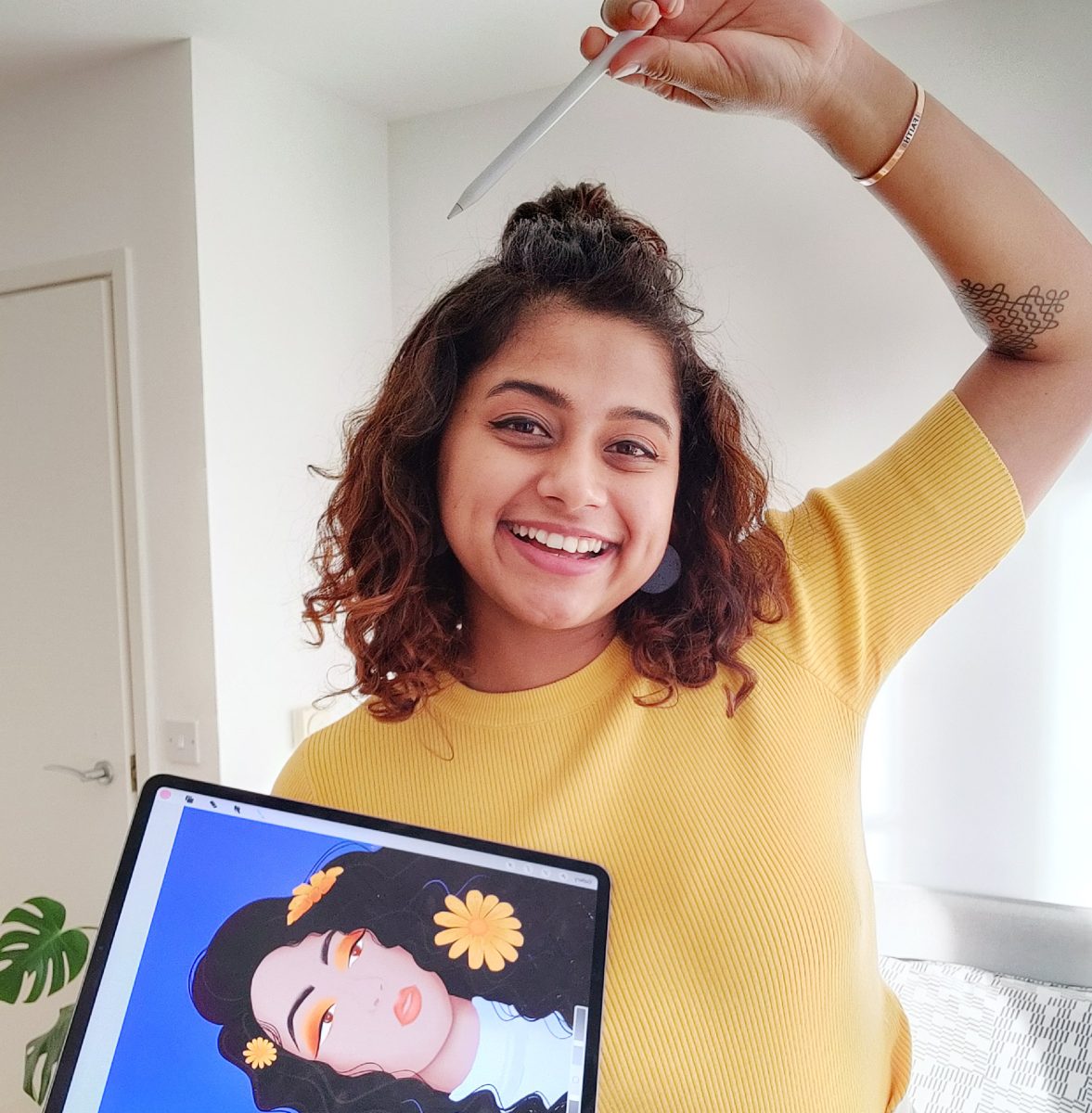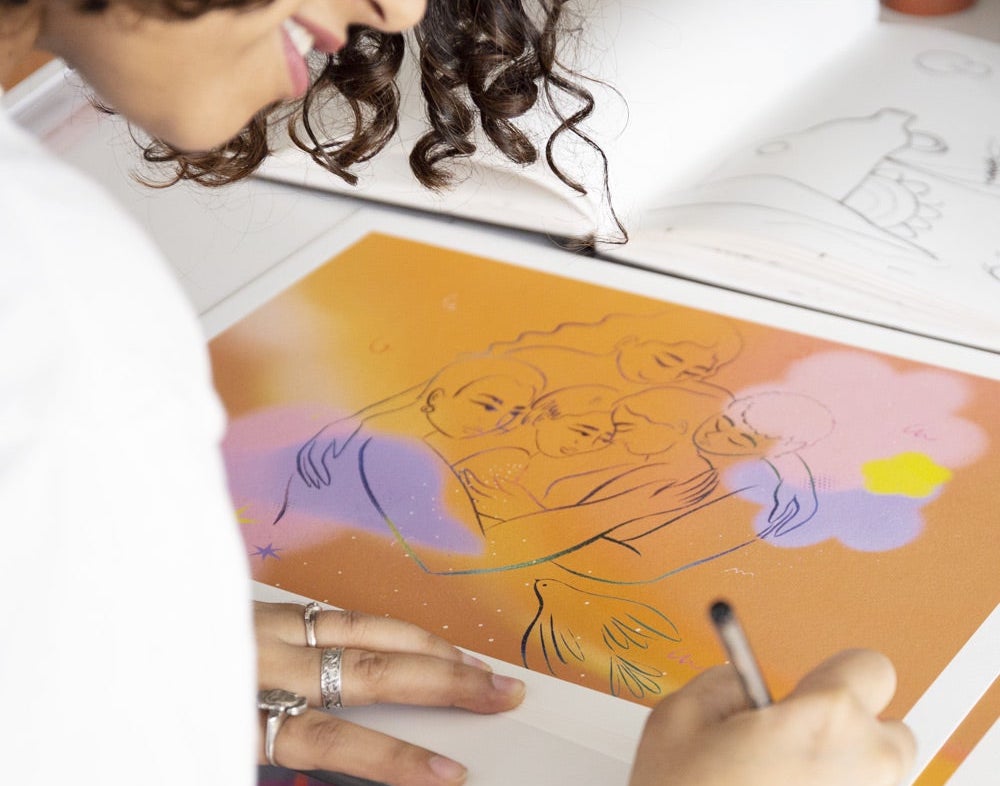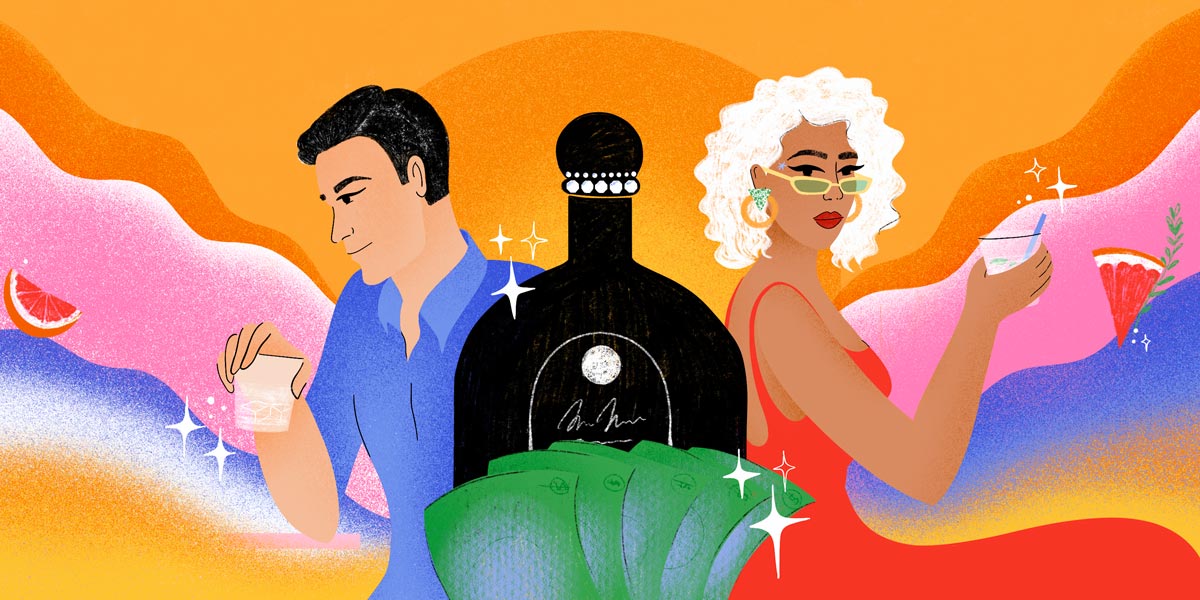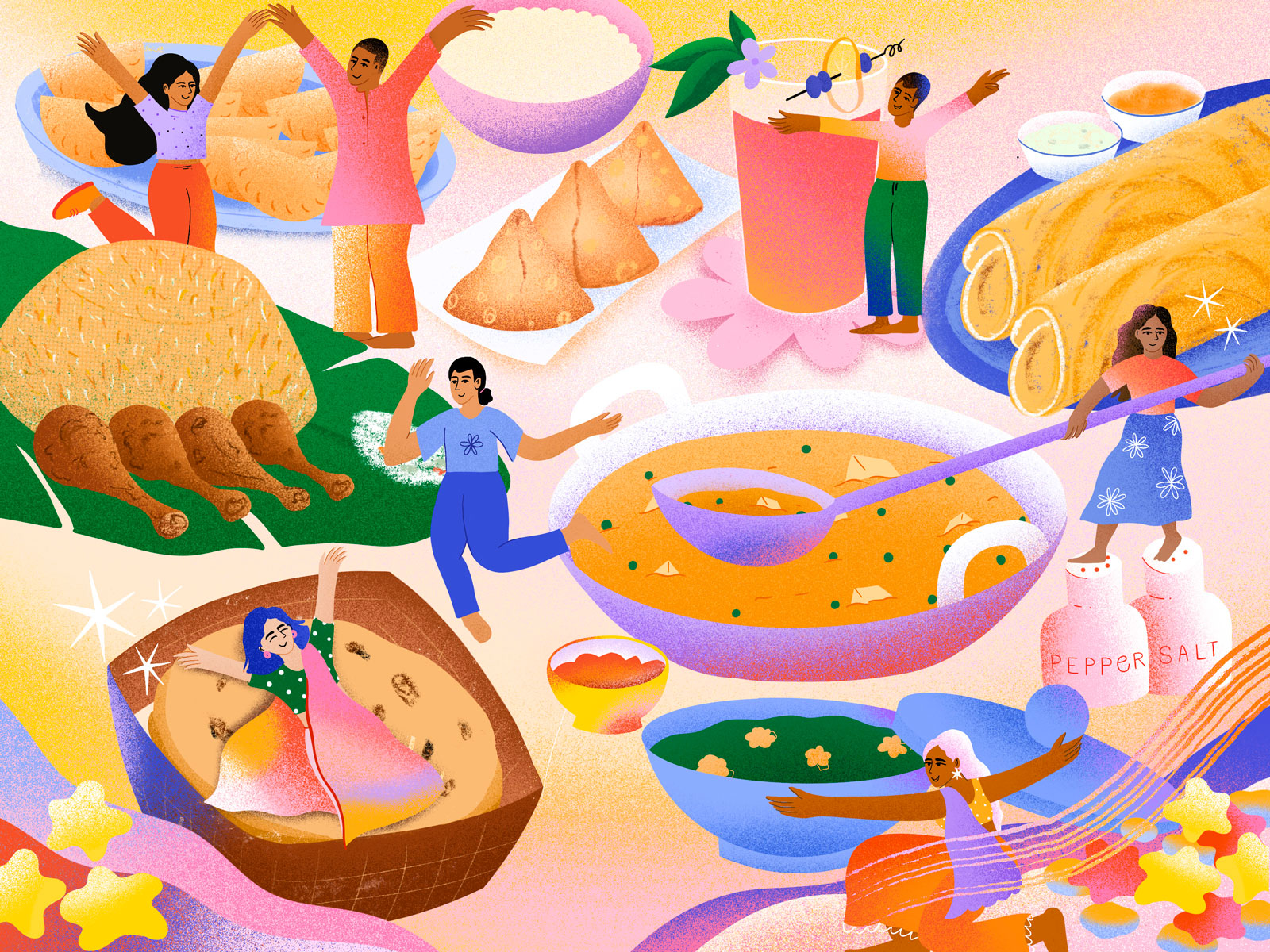Keep Your Copyright – Illustrator Focus with Sneha Shanker

What’s the most important and valuable thing you own as a creator? The answer’s simple: it’s the copyright to your work.
In order to protect licence-based industries, we’re calling on illustrators, agents and commissioners to unite and push back on copyright assignments through our new ‘Keep Your Copyright’ campaign. We’ve found that the best way to protect your copyright is first to understand its value, so we caught up with AOI member and Freelance Illustrator Sneha Shanker to hear her views and in particular what retaining her copyright means for herself and Illustrators alike.
You can read our interview with Sneha below.

Can you tell us a bit about yourself and your illustration career journey so far?
My name is Sneha Shanker, and I studied Communication design. I fell in love with illustration while studying design and used to find opportunities to illustrate for a lot of my design projects. In 2016 I started putting my digital illustration experiments online and got contacted by an AD from a large organization who spotted my work. That opened my eyes to the possibilities of illustration as a career no matter where you are based in the world, and it was pretty damn exciting. It wasn’t until 2019 that I went full time into illustration.
How do you know when a commission is right for you?
In terms of figuring out if the commission is the right one for me, I think the brief speaks volumes. The way the client approaches me is also important. Some of the questions that I look for in a brief are:
Does the client know exactly what they want?
It’s good to have a client who knows what they are aiming for) Vague terminology is a big red flag for me as it mostly ends up being someone who is price fishing and isn’t too serious. This obviously depends on a lot of factors, like if this client is from a known Brand/organization who hires illustrators regularly or is an individual looking to hire their first illustrator.
Are they approaching me for my style/work?
Does the budget fit with the expected deadline (and licenses, usage rights etc)? Will this project add something to my portfolio?
Do I feel excited to approach the subject matter that I have to tackle?
Or sometimes it can be the company/brand that I can be excited to work with. Sometimes it’s even the cause attached to a project that can incentivise me to take up a commission. A recent example would be an illustration I did for AMT Youth Programme, a Community Interest Company supporting 16 -18 year old black young people in South East London, to get work experience in the creative industries and financial support to drive their creative passions.

How have you grown in confidence as an Illustrator?
I think every project makes me a little more confident than the one before. Negotiating with clients still isn’t my favourite part of the job but it’s a skill that is essential & has to be mastered over time. I still get anxious sometimes but at the end of the day, if I know I deserve to get more for a certain project, it’s always worth it to ask if it’s possible.
What does retaining your copyright mean to you?
Retaining my copyright means that I remain the owner of what I create. If there is a scenario where I have to transfer rights, it would depend on the kind of work that is in question and what it can potentially bring to me in the future (including all forms of potential income)
Has there ever been a situation when you accepted a copyright assignment and why did you do this?
I have not accepted a copyright assignment yet. One of the first ever projects offered to me was a work for hire agreement and back then I had to google what that meant! I did not end up doing the project due to other reasons. A lot of American companies still give work for hire agreements and one has to be careful when they accept these. I was recently offered another WFH agreement and with the help of the AOI I was able to negotiate this agreement to better reflect the project’s needs and the licence required.

What resources do you use to feel like a professional?
I make sure that I’m well read about what is new and what is happening in the illustration and design community around the world. I also try to be aware of industry standards (this can be debatable but it’s good to have an idea of the range).
The AOI’s pricing calculator is great to have an approximate figure while negotiating prices. LiteBox is a free community supported platform which has wage surveys collected over time.
Having my own contract template ready to tweak for projects is great to have in my kit.
Resources like Creative Lives in Progress and It’s Nice That serve some great advice and inspiration. I also keep learning and trying out new skills to keep myself inspired and fresh. Skillshare has a good collection of courses that provide great value.

How would you encourage other Illustrators to protect their rights?
Owning the rights to your own work might sound like a no brainer but it’s something that every artist should learn how to protect, it’s the most precious asset.
Transferring the ownership of your work would mean that any profit made off of the work will never ever find its way back to the artist. Sometimes copyright transfers are also hidden behind terms like Work for hire. I would highly recommend negotiating such agreements by giving clients some other options for usages and licensing. You would be surprised how many clients don’t exactly need our work ‘forever’.
Giving the clients usage rights and licencing options is in turn more beneficial to illustrators as we can retain our copyright. Any license can be extended if needs be and we can license out the same work to other clients (in the case of non-exclusive agreements), we can also develop products and prints to sell, or use these assets for other projects. The possibilities are endless only if we own our work, and keep our copyright.
Many thanks to Sneha Shanker for her time and answers.
You can find more of Sneha’s work on her Website and Instagram.
Back to News Page
